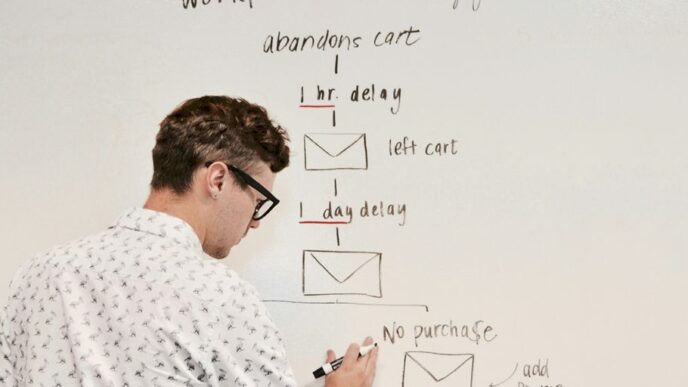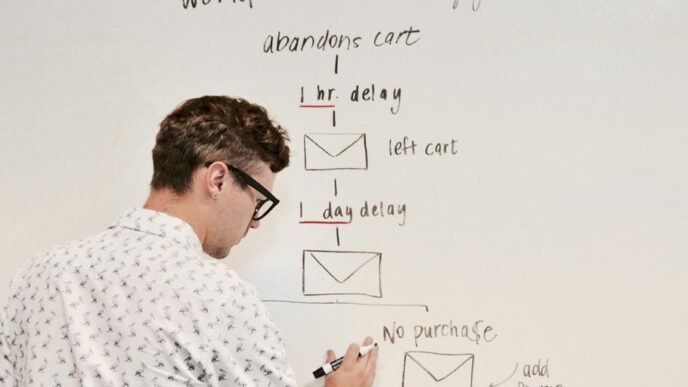Creating a 360 marketing campaign might sound like a big task, but it’s really about one thing: making sure your brand connects with people no matter where they are. Whether it’s social media, email, or even old-school methods like flyers, this strategy ties everything together. The goal? To make sure your message feels consistent and relevant. Let’s break it down step by step so you can nail your next campaign.
Key Takeaways
- A 360 marketing campaign ensures your message reaches customers across all platforms in a unified way.
- Data and audience insights are critical for crafting a campaign that truly connects.
- Measuring results lets you fine-tune your approach and improve future campaigns.
Understanding the Core Elements of a 360 Marketing Campaign
Defining a 360 Marketing Campaign
A 360 marketing campaign is like a well-oiled machine that reaches customers from every possible angle. It’s not just about throwing ads on every platform—it’s about creating a unified, immersive experience. Imagine a circle that touches every point; that’s the idea. Your campaign uses multiple channels—email, social media, traditional ads—but keeps the message consistent. For example, your Instagram post might be playful and visual, while your email might be more detailed, but both deliver the same core idea. This is what sets it apart from a basic multi-channel approach.
Key Differences Between 360 and Multi-Channel Marketing
At first glance, 360 and multi-channel marketing might seem like the same thing. But here’s the kicker: multi-channel marketing operates in silos. Each platform does its own thing, often with little thought to how they connect. A 360 campaign, on the other hand, is all about integration. It’s like a symphony where every instrument plays in harmony. While a multi-channel campaign might have separate teams handling social media and email, a 360 approach ensures they’re all on the same page, delivering a cohesive message.
The Role of Consistent Messaging Across Platforms
Consistency isn’t just a buzzword—it’s the glue that holds a 360 campaign together. When customers see your ad on Facebook and then get an email from you, they should feel like they’re part of the same conversation. This doesn’t mean copy-pasting your content everywhere. Instead, adapt your message to fit the tone and style of each platform while keeping the core idea intact. Consistency builds trust, and trust is what turns a curious browser into a loyal customer. As Carlos Cruz from Clicktool points out, strategic planning and cohesive messaging are key to maximizing returns in any campaign.
Crafting a Data-Driven 360 Marketing Strategy

The Importance of Audience Insights
Understanding your audience is the backbone of any successful marketing strategy, especially for a 360 campaign. Start by gathering data on who your customers are, what they care about, and where they spend their time. Tools like surveys, social media analytics, and customer feedback can help paint a clear picture. Once you know your audience, segment them into groups based on shared characteristics or behaviors. This way, you can tailor your messaging to hit the right note with each group. Without these insights, you’re essentially throwing darts in the dark.
Leveraging Analytics for Campaign Optimization
Data isn’t just for show—it’s your guide. Use analytics to track how your campaign is performing across different channels. Are people clicking on your emails but ignoring your social ads? Adjust your strategy accordingly. Platforms like Google Analytics or built-in tools on social media platforms can give you a wealth of information. Look at metrics like engagement rates, conversion rates, and customer retention to see what’s working and what’s not. The key is to stay flexible and make changes based on what the data tells you.
Balancing Personalization with Privacy
Personalization is a game-changer, but it’s a fine line to walk. People love content that feels tailored to them, but they also value their privacy. Make sure you’re transparent about how you’re using their data. Offer opt-in options and give them control over what they share. It’s also smart to rely on first-party data—information you collect directly from your audience—rather than buying third-party data. This builds trust and helps you stay compliant with privacy laws. Striking the right balance will keep your audience engaged without crossing any boundaries.
Maximizing Impact Through Channel Integration

Choosing the Right Marketing Channels
Picking the right channels is like building the foundation of a house—you can’t skip it. Start by understanding where your audience spends their time. Are they scrolling through Instagram, reading email newsletters, or searching Google? Don’t try to be everywhere at once. Instead, choose a handful of platforms that align with your goals and budget. For instance, younger audiences might hang out on TikTok, while professionals could be on LinkedIn. Think about what fits your product, too. A visual brand? Instagram and Pinterest might be your best bet. Selling software? Maybe focus on search ads or email campaigns.
Tailoring Content for Platform-Specific Audiences
Here’s the thing—what works on one platform might flop on another. You wouldn’t post a 2,000-word blog on Twitter, right? Each channel has its vibe, so adapt your content to match. For Instagram, make it visual and snappy. On LinkedIn, focus more on thought leadership and professional updates. The goal is to speak the platform’s language while staying true to your brand. Also, keep in mind how people consume content. Mobile users might prefer quick videos, while desktop users might be okay with longer reads. Always test and tweak to see what sticks.
Ensuring Seamless Customer Experiences
Think of your campaign as a journey for your customer. If they see an ad on Facebook, click it, and end up on a clunky website, you’ve lost them. Everything needs to flow smoothly. Your messaging, visuals, and tone should feel consistent across all channels. Even more important, make sure your tech works. If someone clicks a link, it should load quickly and look good on their device. And don’t forget follow-ups. If they sign up for a newsletter or add something to their cart, a friendly email reminder can go a long way.
By focusing on these three areas, you’ll be setting yourself up to make the most of your 360 marketing campaign. It’s not about being everywhere—it’s about being in the right places and making it count.
Measuring Success in a 360 Marketing Campaign
Setting Clear and Measurable Goals
First things first: you’ve got to know what you’re aiming for. Setting clear goals isn’t just about saying, “We want more sales.” It’s about getting specific. Do you want to increase website traffic by 20%? Maybe you’re aiming for 1,000 new email subscribers or a 15% boost in social media engagement. Whatever it is, make sure your goals are measurable. Numbers keep you honest—they tell you if you’re making progress or if something’s off track. And don’t forget to align those goals with your broader business objectives. A 360 campaign is big-picture stuff, so your goals should reflect that.
Tracking Performance Across Channels
When you’re running campaigns across multiple platforms—social media, email, paid ads, and more—it’s easy to lose track of what’s working and what’s not. This is where performance tracking tools come in handy. Use analytics platforms to monitor key metrics like click-through rates, conversion rates, and engagement levels. But don’t just look at the numbers—dig into what they mean. For example, if your email open rates are high but click-through rates are low, your subject lines might be great, but your content could need some tweaking. And remember, consistency is key. Regularly check your data so you can spot trends and make adjustments in real time.
Using Data to Refine Future Campaigns
Here’s the thing about data: it’s not just there to tell you how you did; it’s there to help you do better next time. After your campaign wraps up, take a deep dive into the results. Did you hit your goals? If not, why? Maybe your messaging didn’t resonate with your audience, or perhaps you focused on the wrong channels. Whatever the case, use those insights to refine your strategy for future campaigns. And don’t be afraid to experiment. Marketing is as much about learning from what doesn’t work as it is about celebrating what does. Over time, these lessons will make your 360 campaigns sharper and more effective.
To truly understand how well your 360 marketing campaign is doing, you need to look at the right signs of success. This means checking how many people are engaging with your ads, how many are visiting your website, and if they are making purchases. By keeping track of these numbers, you can see what’s working and what needs to change. Want to learn more about boosting your marketing efforts? Visit our website for tips and insights!
Conclusion
Creating a 360 marketing campaign might sound like a big task, but it’s really about connecting with your audience in a way that feels natural and consistent. By using different channels and tailoring your message for each one, you can make sure your brand is showing up where your customers are. The key is to plan carefully, keep an eye on what’s working, and be ready to tweak things as you go. It’s not about being everywhere all at once—it’s about being in the right places with the right message. So, take it step by step, stay flexible, and remember: the goal is to build a campaign that feels seamless for your audience and gets results for your business.














